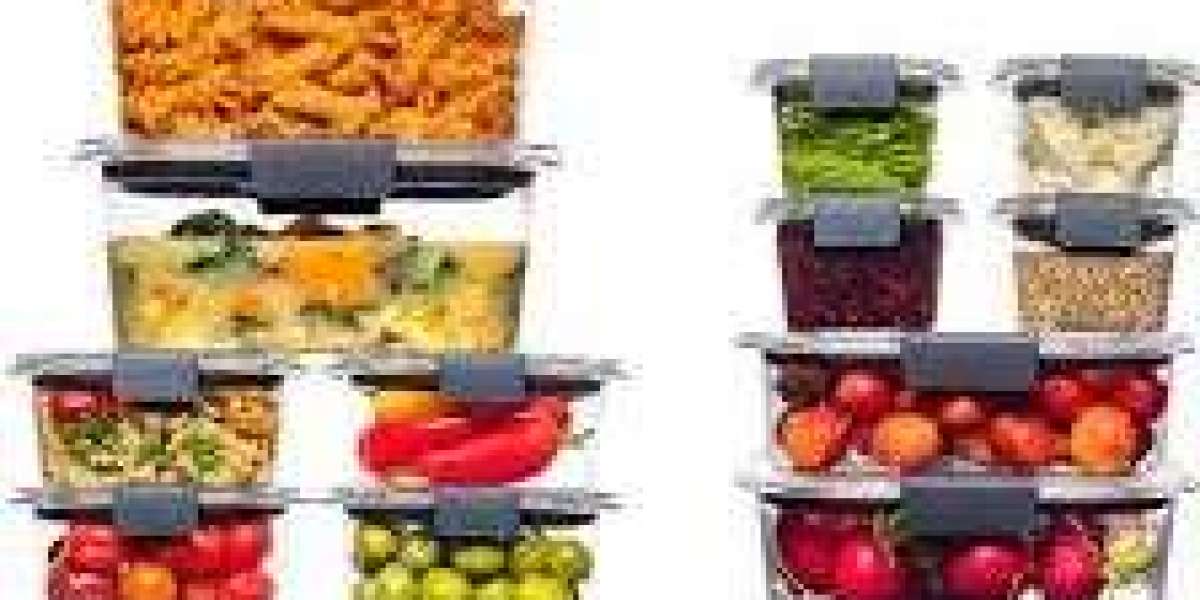Glass Jars vs Plastic: Which Is Better for Food Storage?
In today’s world of heightened environmental awareness and health consciousness, how we store our food has become more important than ever. From leftovers to meal prep and pantry staples, the containers we choose impact not only our health but also the planet. When it comes to food storage, the debate often boils down to two main options: Glass Jars or Containers and plastic ones.
Each material has its own set of advantages and disadvantages, but as consumers seek healthier lifestyles and more sustainable choices, the preference is clearly shifting. So, what makes one better than the other? Let’s break down the pros and cons of Glass Jars or Containers versus plastic and determine which truly stands out as the better choice for food storage.
Health and Safety: What Are You Putting Your Food In?
Glass Jars or Containers
One of the most compelling reasons people choose glass for food storage is its non-toxic and inert nature. Glass doesn't contain harmful chemicals like BPA, phthalates, or microplastics, which are commonly found in certain plastic containers. This makes it a safer option for storing everything from baby food to soups, sauces, and dry goods.
Glass is also non-reactive, which means it won’t leach chemicals or alter the taste and smell of your food — even when storing acidic items like tomatoes, citrus, or vinegar-based dressings.
Plastic Containers
Plastic containers, especially those not labeled BPA-free, have raised concerns over chemical leaching — especially when exposed to heat, such as in microwaves or dishwashers. While many modern plastics are now manufactured to be safer, questions still remain about long-term exposure to certain compounds.
Additionally, plastic tends to absorb odors and stains over time, which can compromise the taste and cleanliness of stored food.
Verdict: When it comes to health and safety, Glass Jars or Containers take the clear lead.
Environmental Impact: Which Is Greener?
Glass
Glass is made from natural raw materials like sand, limestone, and soda ash. It is 100% recyclable and can be reused endlessly without loss in quality or purity. Glass also doesn’t break down into microplastics, which have become a growing concern for oceans and marine life.
Moreover, glass containers are durable and long-lasting. A single well-made glass jar can be reused for years, reducing the need for disposable or short-lived alternatives.
Plastic
Plastic production consumes fossil fuels and releases greenhouse gases. While plastic is technically recyclable, only a small percentage actually gets recycled. Many types of plastic can only be recycled a limited number of times before they degrade and become waste.
Additionally, plastic contributes heavily to pollution — especially in the form of microplastics, which contaminate water, soil, and even the food we eat.
Verdict: In terms of environmental sustainability, Glass Jars or Containers are a much more eco-friendly choice.
Durability and Longevity
Glass
Though glass is breakable, it's also highly durable when handled properly. Tempered or borosilicate glass can withstand both hot and cold temperatures, making it suitable for freezing, baking, and microwaving. With proper care, glass containers can last for decades.
Plastic
Plastic is undeniably lightweight and resistant to shattering, which makes it more convenient for travel or children's use. However, plastic tends to degrade over time — becoming scratched, warped, or stained — and often needs replacing every few years.
Repeated exposure to heat (such as microwaving or dishwashing) can accelerate the deterioration of plastic containers, leading to cracks or the release of chemicals.
Verdict: For long-term use and resilience, Glass Jars or Containers hold up better over time.
Convenience and Usability
Glass Jars or Containers
Glass containers are microwave-safe, oven-safe (in many cases), and dishwasher-friendly. They are ideal for meal prep, reheating, and even serving straight from the container. Their transparency also makes it easy to see what’s inside, which can reduce food waste.
However, glass is heavier and more prone to breakage. It may not be the best option for packed lunches or travel unless well-protected.
Plastic Containers
Plastic containers are lightweight, stackable, and versatile, which makes them ideal for on-the-go lifestyles. They’re easy to carry, less likely to break if dropped, and come in a wide variety of shapes and sizes.
But the convenience comes with drawbacks, especially in terms of longevity, cleanliness, and environmental cost.
Verdict: For convenience, plastic wins. But for usability in the kitchen and versatility across cooking methods, Glass Jars or Containers offer broader functionality.
Cost and Accessibility
Plastic Containers
Plastic containers are typically more affordable upfront, making them an attractive option for budget-conscious households. They’re widely available and often sold in large multi-packs.
However, because plastic degrades faster and may need to be replaced more often, the long-term cost could be higher than it appears.
Glass Jars or Containers
Glass tends to have a higher upfront cost, but its durability and reusability make it a wise investment over time. Many people even reuse glass jars from store-bought foods, such as sauces, jams, or pickles, giving them a second life without any added cost.
Verdict: Plastic is cheaper at first, but Glass Jars or Containers provide better value in the long run.
Food Preservation and Freshness
Glass
Glass is excellent for maintaining food freshness because of its airtight seal and nonporous surface. It doesn't absorb moisture or odors and keeps both dry goods and perishables fresher for longer. For canning and preserving, glass jars are the gold standard.
Plastic
Plastic containers are often less effective at sealing out air, especially after repeated use. This can lead to faster spoilage and food waste. Additionally, their porous nature can result in lingering smells and stains that affect food quality.
Verdict: For keeping food fresh and uncontaminated, Glass Jars or Containers are the superior choice.
Style and Aesthetic Appeal
Glass adds a level of sophistication and cleanliness that plastic simply can’t match. A pantry filled with matching Glass Jars or Containers has a timeless, organized look that appeals to many. Their clarity also allows for easy identification of contents.
While some high-end plastics try to replicate this appearance, they often fall short in clarity and elegance over time.
Verdict: For style and organization, Glass Jars or Containers win hands down.
So, Which Is Better?
When comparing Glass Jars or Containers to plastic for food storage, the winner depends on your priorities:
If you value health, sustainability, longevity, and aesthetic appeal, glass is the clear choice.
If you need something lightweight, travel-friendly, and low-cost upfront, plastic might be more suitable for certain situations.
However, more and more households are choosing to phase out plastic in favor of glass due to its many benefits. A hybrid approach is also common — using glass at home and plastic when portability is essential.
Final Thoughts
In the debate between Glass Jars or Containers and plastic for food storage, it’s clear that glass offers a safer, greener, and more durable solution. While plastic may win on convenience and price, its drawbacks in terms of health, environmental impact, and longevity are difficult to ignore.
As we become more mindful of what we consume and how we consume it, shifting toward Glass Jars or Containers is a practical step toward a healthier lifestyle and a cleaner planet. Whether you're storing last night's leftovers, organizing your pantry, or meal-prepping for the week ahead, glass proves to be a smarter, more sustainable choice — one that pays off in more ways than one.














